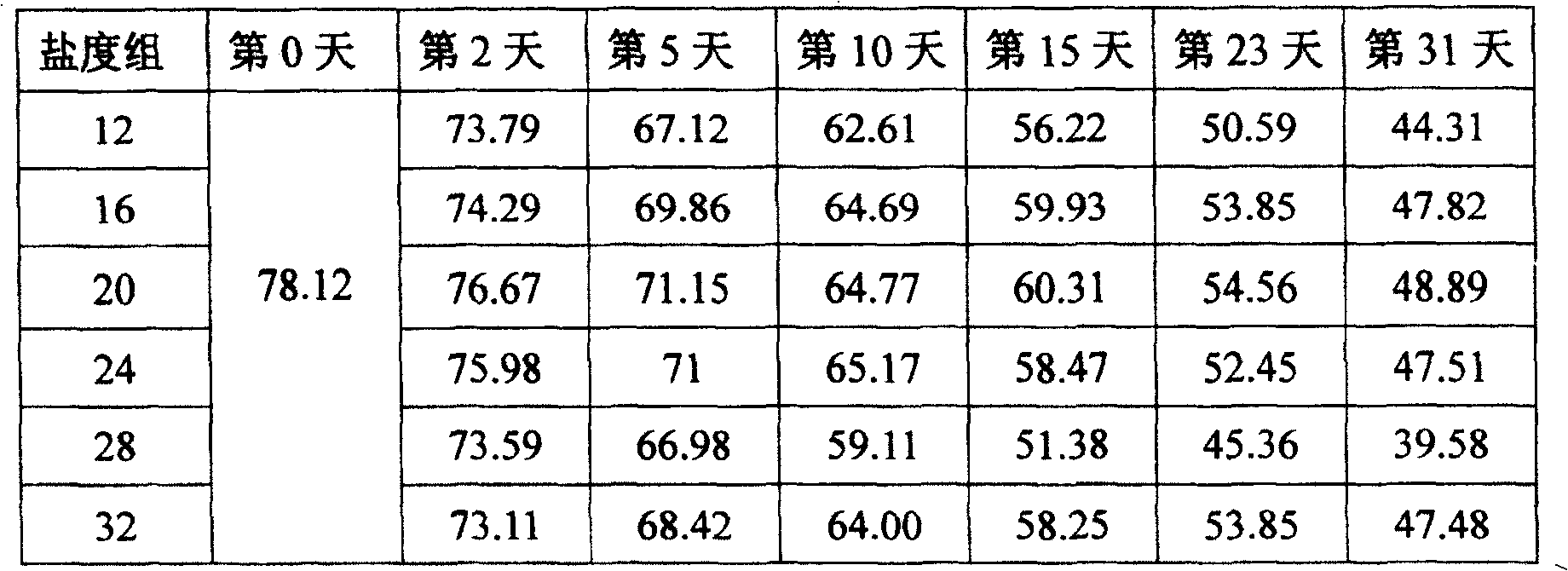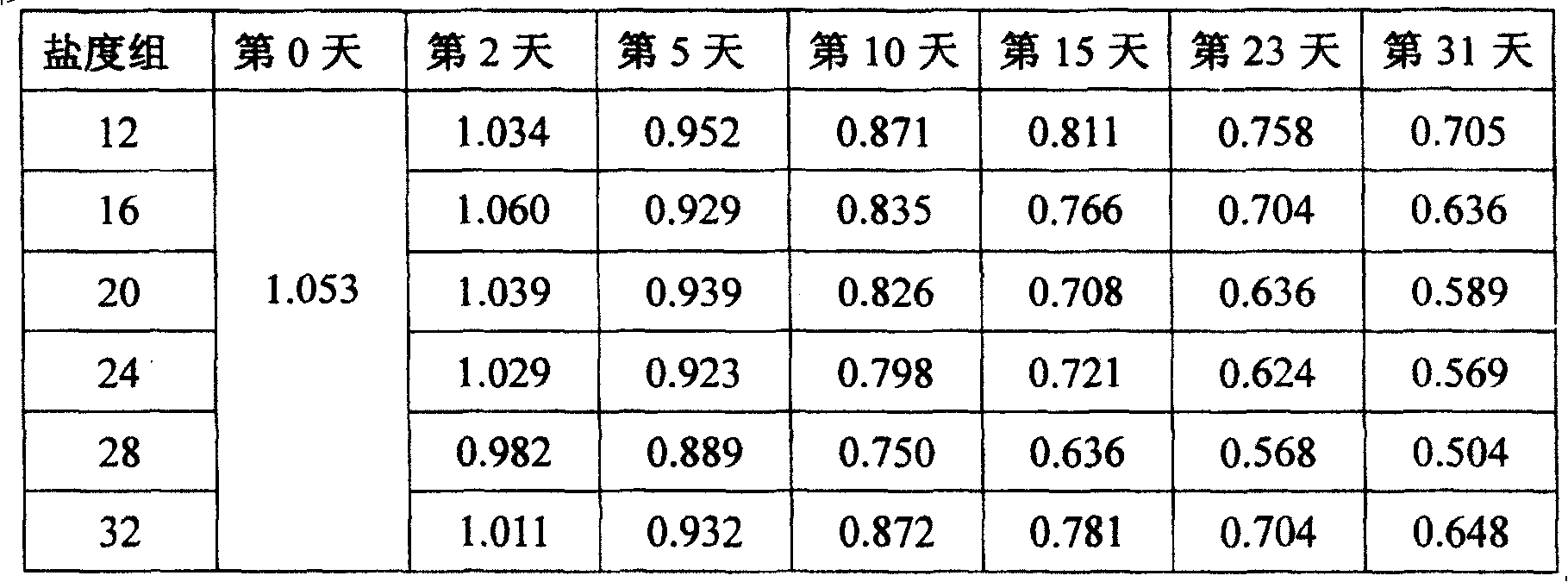Method for purifying in vivo heavy metal of bivalve shell
A bivalve and heavy metal technology, applied in climate change adaptation, fish farming, application, etc., to achieve the effects of great economic and social significance, simple operation, and low purification cost
- Summary
- Abstract
- Description
- Claims
- Application Information
AI Technical Summary
Problems solved by technology
Method used
Image
Examples
Embodiment 1
[0018] 40 lightly polluted oysters were placed in each of six plastic buckets containing 120L of sand-filtered natural seawater. The salinity of each barrel was 12, 16, 20, 24, 28, 32 (unit: ‰), and the salinity 32 was used as the control group. The experiment was carried out under natural light and room temperature (22-28° C.), the experiment period was 31 days, and the pH value of the water was adjusted to be between 7.6 and 7.9. Except for the control group where no algae was added, each experimental group was regularly fed with flat algae three to four times a day, and the concentration of flat algae in the water body was kept between 20,000 and 40,000 cells / L of water body.
[0019] At the beginning of the experiment, that is, on the 0th day, the contents of heavy metals Cu, Zn, Pb, and Cd in oysters were measured, and 6 surviving oysters were randomly selected from each experimental group on the 2nd, 5th, 10th, 15th, 23rd, and 31st day of the experiment. For oysters, th...
Embodiment 2
[0030] 40 lightly polluted oysters were placed in each of four plastic buckets containing 120L of sand-filtered natural seawater. The salinity of each barrel water body is 32, and the pH value is adjusted to between 7.6 and 7.9. The experiment was carried out under natural light and room temperature (22-28° C.), and the experiment period was 31 days. Except for one bucket used as the control group without algae feed, the other buckets were fed with chlorella, flat algae, and mixed algae (chlorella: flat algae at a ratio of 1:4) every day, and each experimental group was fed regularly every day. Feed the algae material three to four times, and keep the concentration of algae in the water between 20,000 and 40,000 cells / L of water.
[0031] At the beginning of the experiment, that is, on the 0th day, the contents of heavy metals Cu, Zn, Pb, and Cd in oysters were measured, and 6 surviving oysters were randomly selected from each experimental group on the 2nd, 5th, 10th, 15th, 2...
Embodiment 3
[0042] In a plastic bucket filled with 120L of sand-filtered natural seawater, 40 slightly polluted Philippine clams were placed. The salinity of the water body is 28, and the pH value is adjusted to be between 7.6 and 7.9. The experiment was carried out under natural light and room temperature (22-28° C.), and the experiment period was 31 days. Feed the mixed algae (chlorella: flat algae ratio of 1:4) three to four times a day, and keep the concentration of algae in the water between 20,000 and 40,000 cells / L of water.
[0043] At the beginning of the experiment, that is, on the 0th day, the contents of heavy metals Cu, Zn, Pb, and Cd in oysters were measured, and 6 surviving oysters were randomly selected from each experimental group on the 2nd, 5th, 10th, 15th, 23rd, and 31st day of the experiment. For oysters, the contents of heavy metals Cu, Zn, Pb, and Cd were determined, and the results are shown in Table 9.
[0044] Table 9 Contents of heavy metals in Philippine clam...
PUM
 Login to View More
Login to View More Abstract
Description
Claims
Application Information
 Login to View More
Login to View More - Generate Ideas
- Intellectual Property
- Life Sciences
- Materials
- Tech Scout
- Unparalleled Data Quality
- Higher Quality Content
- 60% Fewer Hallucinations
Browse by: Latest US Patents, China's latest patents, Technical Efficacy Thesaurus, Application Domain, Technology Topic, Popular Technical Reports.
© 2025 PatSnap. All rights reserved.Legal|Privacy policy|Modern Slavery Act Transparency Statement|Sitemap|About US| Contact US: help@patsnap.com



